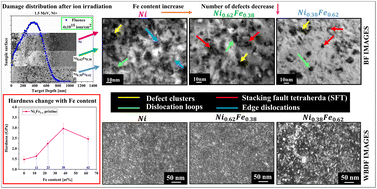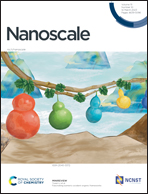Tuning heterogeneous ion-radiation damage by composition in NixFe1−x binary single crystals
Abstract
Radiation-induced heterogeneous damage is the single largest source of failures seen in structural components in nuclear power reactors. Single crystal materials without grain boundaries, show considerable promise for overcoming this problem. In this work, such heterogeneous damage was further overcome in NixFe1−x single crystal alloys via a simple strategy of fine-tuning the composition. [001] NixFe1−x (x = 0, 0.38 and 0.62 at%) single crystals prepared using the Bridgman method were irradiated over a wide fluence range (4 × 1013 to 4 × 1015 ions per cm2). The irradiation-induced defect evolution was studied using Rutherford backscattering/channeling spectrometry, Monte Carlo simulations, transmission electron microscopy and nanoindentation. The results indicate an increased radiation tolerance of Ni0.38Fe0.62 compared to pure Ni and Ni0.62Fe0.38. The structural analysis performed by transmission electron microscopy revealed that defects tend to agglomerate at one place in Ni and Ni0.62Fe0.38, while in Ni0.38Fe0.62 no defect accumulation zone (characteristic damage peak) has been captured either at low or high fluence. Moreover, we found that the hardness change with the increase of Fe content is due to different arrangements of Fe atoms in the crystal structure, which influences the obtained mechanical properties of NixFe1−x in the pristine state and after ion implantation.



 Please wait while we load your content...
Please wait while we load your content...